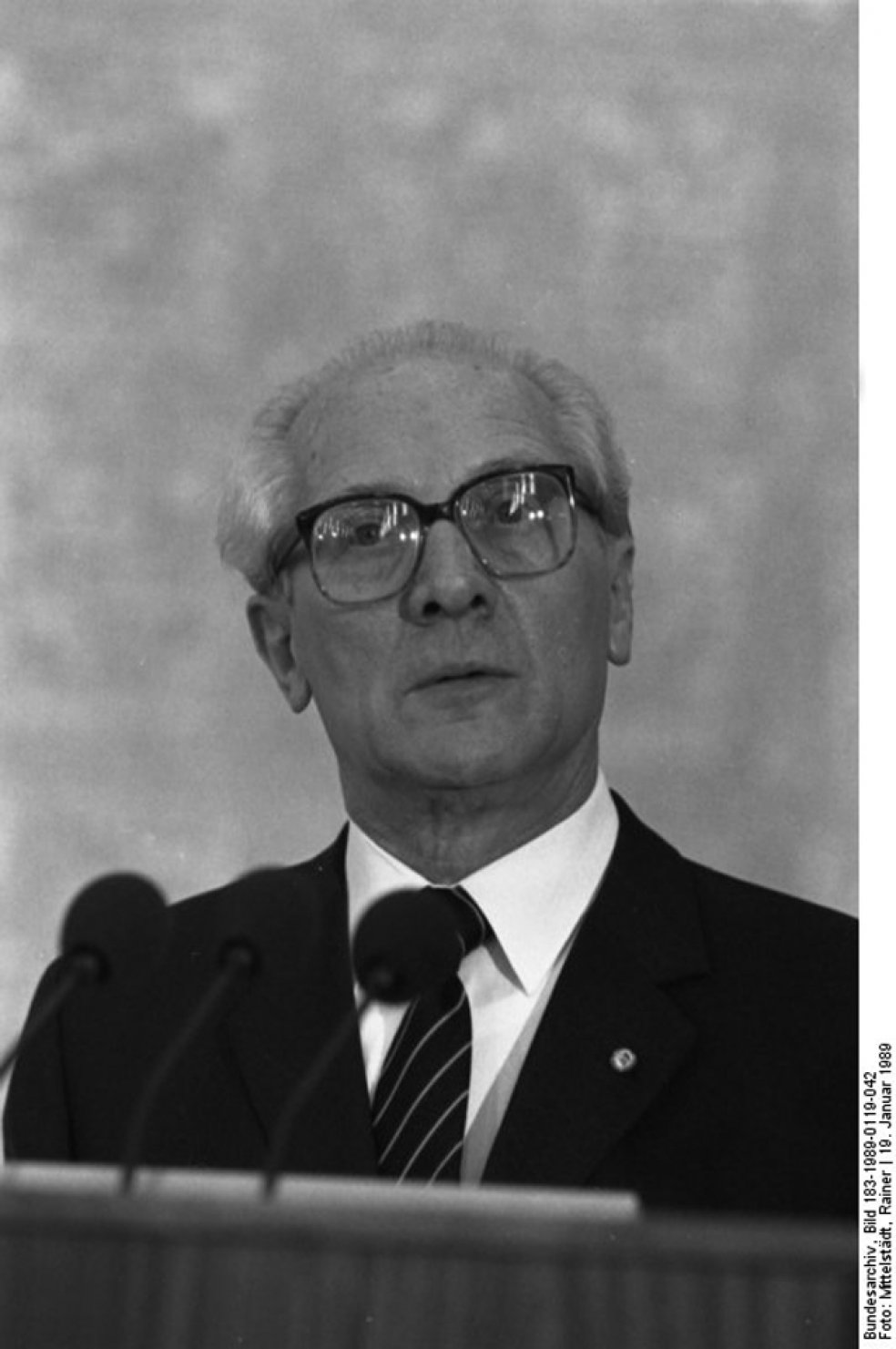"The Wall … will still be standing in fifty and even a hundred years' time": that's what Erich Honecker is still saying at the end of January 1989. And the GDR does seem stable to most people at the time, even though the dilapidated condition of industrial plants, the old parts of cities and the roads, as well as the air and water pollution, all herald the imminent economic disaster.
But the pressure to carry out changes in the GDR comes from outside. The Soviet Union is in a deep economic and political crisis.
To end the arms race and limit military spending, the leaders in Moscow and all their allies sign the CSCE agreement in January 1989. Among other things, they undertake to guarantee all citizens the right to leave a country and return again.
On May 2 1989, Hungarian border troops take down the barbed-wire fence to Austria. In the GDR, the first demonstrations are held to demand the right to leave the country: over 100,000 people are waiting for their applications for exit visas to be approved. But the GDR government remains firm.
At the start of the summer holidays, a large number of GDR citizens decide to do something about the situation: they occupy the Permanent Mission of West Germany in East Berlin and the West German embassies in Warsaw, Prague and Budapest. Thousands of mostly young people travel to Hungary with the aim of reaching West Germany via Austria.
On September 10, the Hungarian government opens the border to Austria for GDR citizens as well. The Wall is crumbling, but the SED party still has support in Prague.
GDR citizens are forbidden to cross the border from Czechoslovakia to Hungary. At the end of September, over 10,000 GDR citizens occupy the West German embassy in Prague to force the authorities to allow them to leave. On September 30, Honecker gives in and lets the refugees go. West German Foreign Minister Hans-Dietrich Genscher announces the news from the balcony of the Prague embassy.
The GDR government continues its firm stance and shuts the border to the CSSR. At the same time, Honecker gives the order to "nip in the bud" the ever more frequent demonstrations.
His plan to bring up tanks in Leipzig "for intimidation purposes" is however rejected by military leaders. On October 17, Erich Honecker is ousted from office in the SED Politburo. His successor, Egon Krenz, announces a "turning point", but the demonstrations against the SED now spread across the entire GDR. Hundreds of thousands of people demand free elections, permission to form opposition groups and freedom to travel. And, on November 9, the Wall finally comes down …
The chronicle of the year 1989 traces the stages of dissolution, exodus and protest. It focuses upon the dramatic events before and after the fall of the Wall – reconstructed and illustrated with documents, film and audio material, photographs and eyewitness interviews. Leading politicians like George Bush and Mikhail Gorbachev, Helmut Kohl and Egon Krenz have a say along with generals and officers of the Ministry for State Security and the National People’s Army (Nationale Volksarmee), as well as normal Berliners who helped bring down the Wall. less
But the pressure to carry out changes in the GDR comes from outside. The Soviet Union is in a deep economic and political crisis.
To end the arms race and limit military spending, the leaders in Moscow and all their allies sign the CSCE agreement in January 1989. Among other things, they undertake to guarantee all citizens the right to leave a country and return again.
On May 2 1989, Hungarian border troops take down the barbed-wire fence to Austria. In the GDR, the first demonstrations are held to demand the right to leave the country: over 100,000 people are waiting for their applications for exit visas to be approved. But the GDR government remains firm.
At the start of the summer holidays, a large number of GDR citizens decide to do something about the situation: they occupy the Permanent Mission of West Germany in East Berlin and the West German embassies in Warsaw, Prague and Budapest. Thousands of mostly young people travel to Hungary with the aim of reaching West Germany via Austria.
On September 10, the Hungarian government opens the border to Austria for GDR citizens as well. The Wall is crumbling, but the SED party still has support in Prague.
GDR citizens are forbidden to cross the border from Czechoslovakia to Hungary. At the end of September, over 10,000 GDR citizens occupy the West German embassy in Prague to force the authorities to allow them to leave. On September 30, Honecker gives in and lets the refugees go. West German Foreign Minister Hans-Dietrich Genscher announces the news from the balcony of the Prague embassy.
The GDR government continues its firm stance and shuts the border to the CSSR. At the same time, Honecker gives the order to "nip in the bud" the ever more frequent demonstrations.
His plan to bring up tanks in Leipzig "for intimidation purposes" is however rejected by military leaders. On October 17, Erich Honecker is ousted from office in the SED Politburo. His successor, Egon Krenz, announces a "turning point", but the demonstrations against the SED now spread across the entire GDR. Hundreds of thousands of people demand free elections, permission to form opposition groups and freedom to travel. And, on November 9, the Wall finally comes down …
The chronicle of the year 1989 traces the stages of dissolution, exodus and protest. It focuses upon the dramatic events before and after the fall of the Wall – reconstructed and illustrated with documents, film and audio material, photographs and eyewitness interviews. Leading politicians like George Bush and Mikhail Gorbachev, Helmut Kohl and Egon Krenz have a say along with generals and officers of the Ministry for State Security and the National People’s Army (Nationale Volksarmee), as well as normal Berliners who helped bring down the Wall. less

